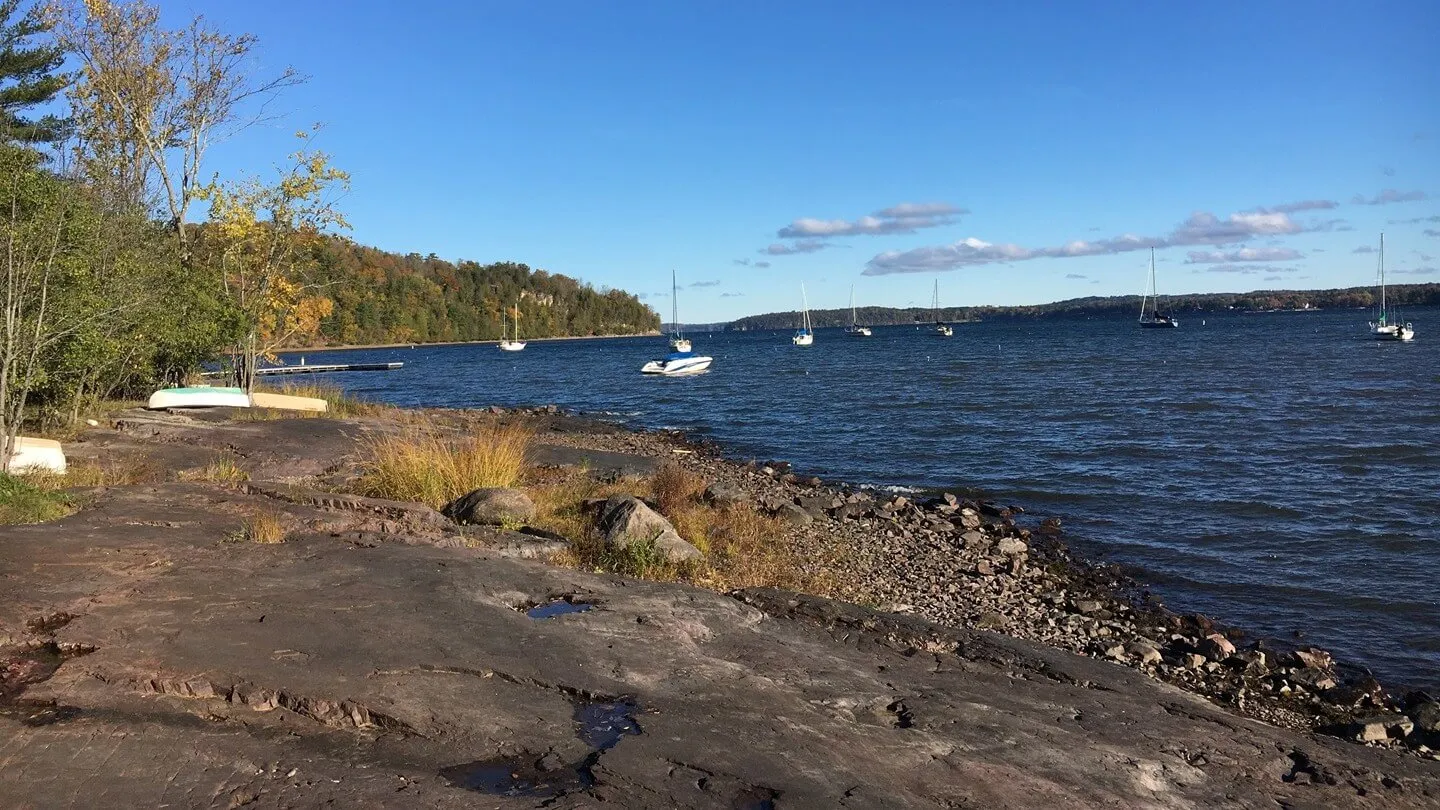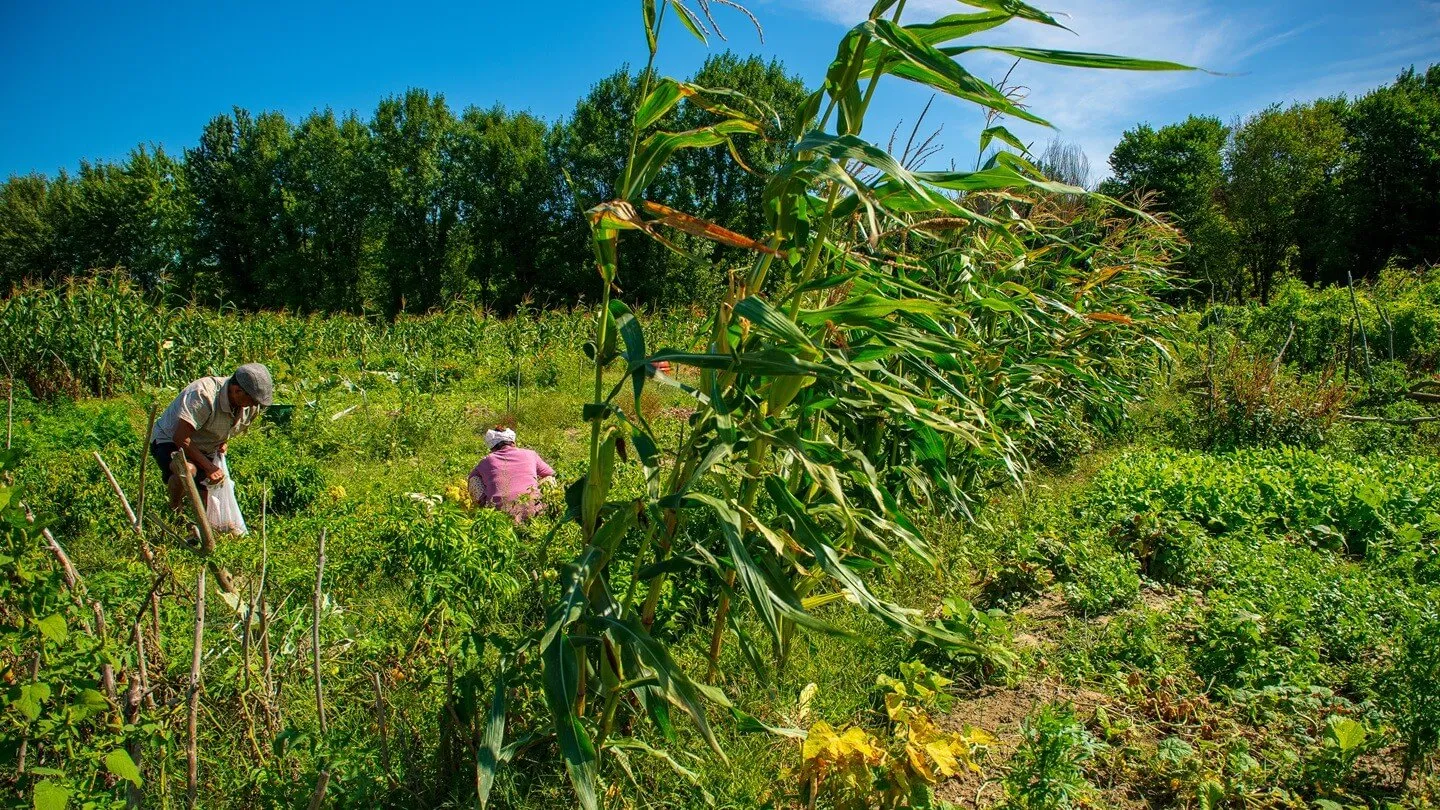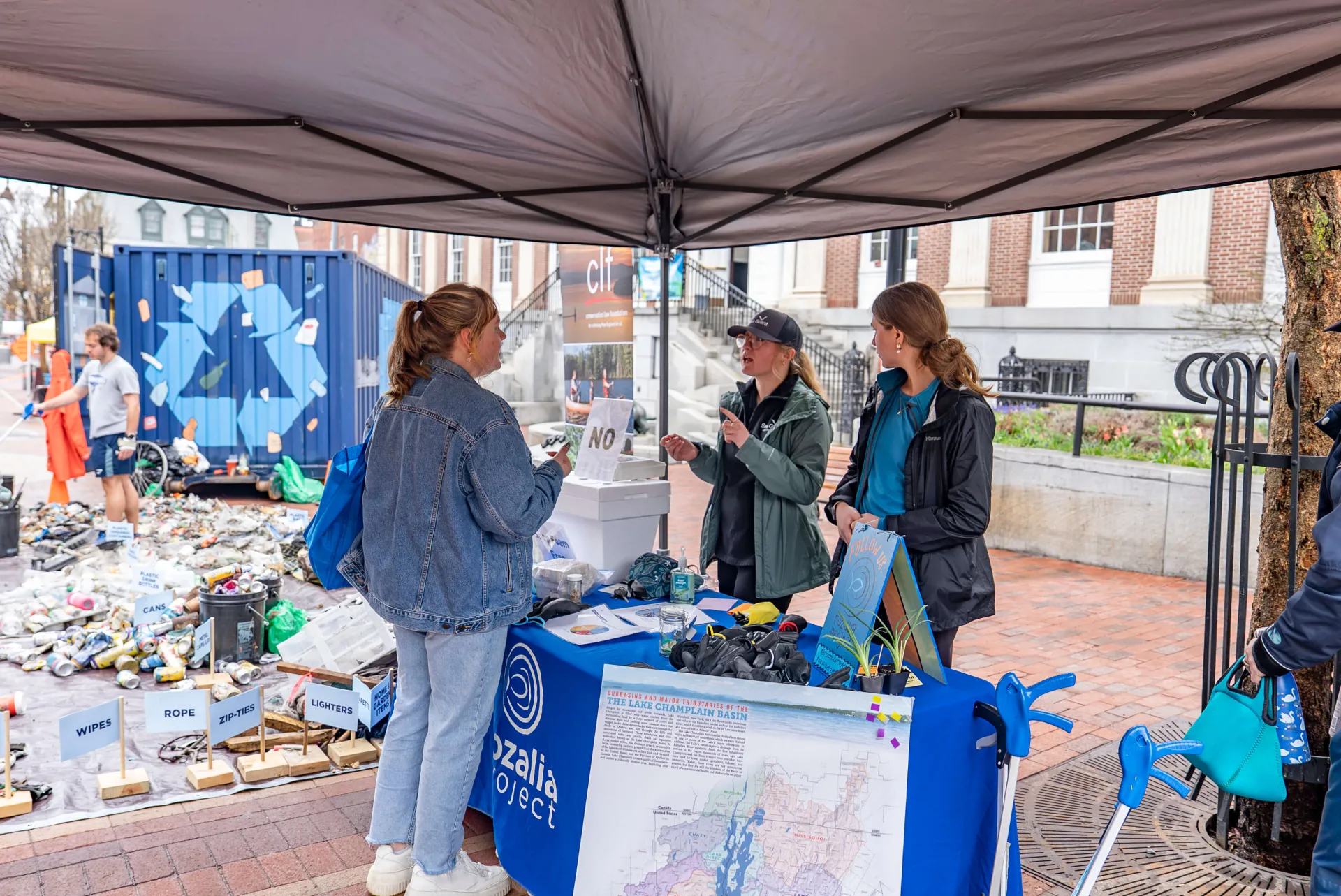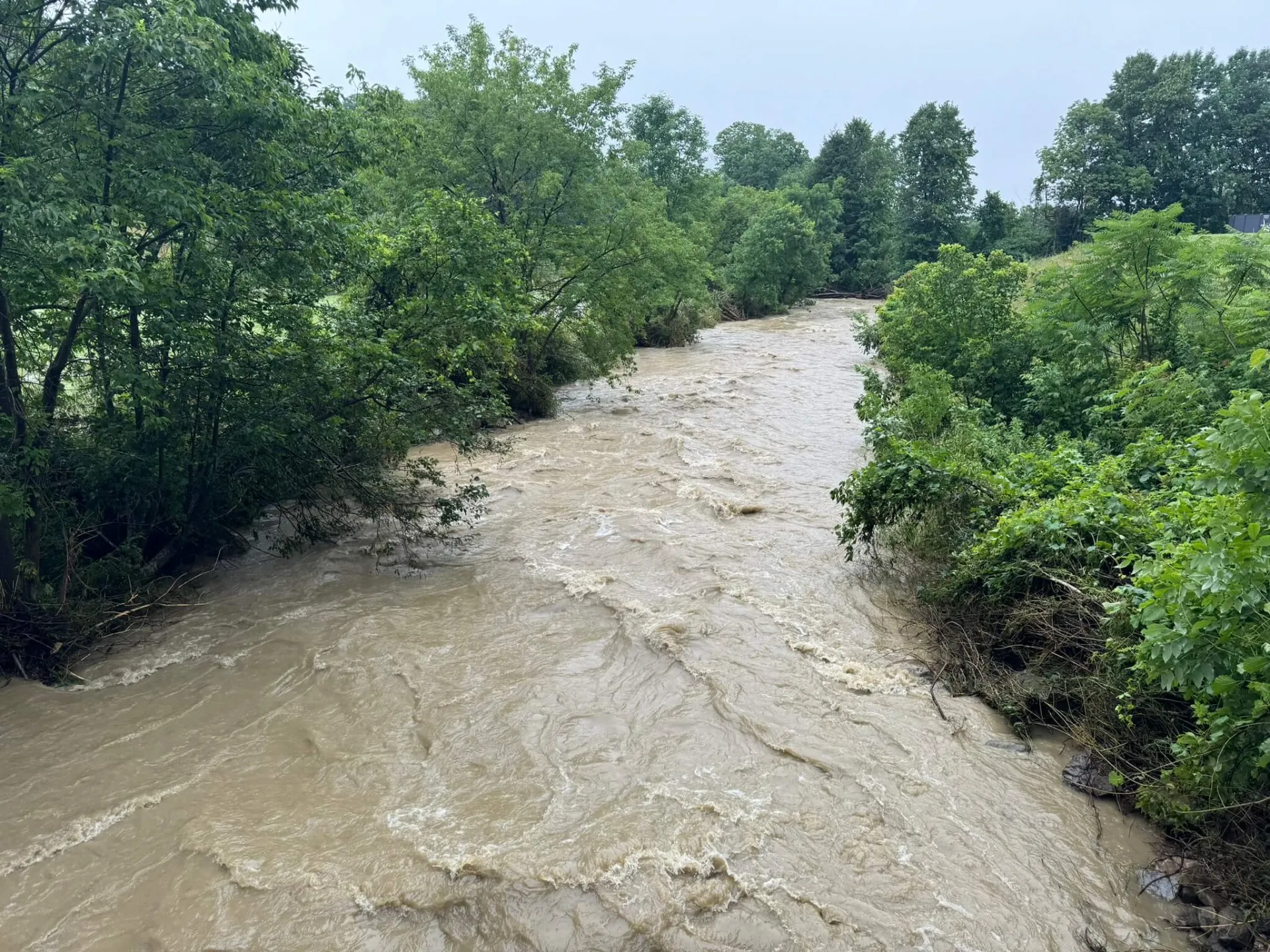The flood of 1927. Tropical Storm Irene in 2011. Historic flooding in 2023 and 2024. Vermonters are no strangers to extreme weather and the ways climate change exacerbates the impacts of natural disasters. But when the worst happens, Vermonters don’t see strangers—only neighbors who need help.
As Vermont’s land-grant university, the University of Vermont, too, aims to serve the people of the Green Mountain State. From agriculture to zoology, the research that happens here helps keep Vermont’s woods and waters clean, Vermont farms productive, and communities safer and healthier.
This summer, we’re sharing environmental research that improves lives and livelihoods in Vermont every day. Today, we’re highlighting projects that help keep pollution out of Vermont’s water, from groundwater to small streams to Lake Champlain.
A bucket of sand, a speck of plastic and a big problem
Visit any Lake Champlain beach on a summer day and a few sites are familiar: the Adirondacks on the horizon, swimmers toting floaties, a stretch of sand curving into the distance. It’s that last part that preoccupies Lake Champlain Sea Grant Director Anne Jefferson, who describes her fieldwork as “a day at the beach.” Jefferson and her students leave the inflatable unicorns and alligators at home, but they carry plenty of buckets (actually, aluminum trays) for sand. From there it’s off to the lab to scrutinize these samples for the tiniest bits of toys and shreds of fleece: microplastics.
Microplastics are any piece of plastic that’s smaller than a pencil eraser, and they’re pretty much everywhere—in waterways, soils, foods, us. Many are too small to easily see, but at any size they can absorb and hold onto environmental pollutants. And they’re all over Lake Champlain’s beaches, Jefferson says, which is a problem because they create “risks to ecosystems, to organisms that might ingest these microplastics.”
That potentially has implications for human health, too.
“We consume fish that have microplastics in them, for example,” she says.
Where does the problem start, and how bad is it? Jefferson’s Lake Champlain Basin Program-funded project is working on finding out. “We have this gap in knowledge about the extent of the microplastic pollution problem in Lake Champlain and where it's coming from,” she says, which is why the vast majority of her team’s time is spent not on a beach but cozied up to a lab bench, eye to microscope, because after sieving their samples, it’s time to note the shape, size and color of all those microplastics. And it only gets more technical from there—a chemical solution separates the littlest bits of plastic from the littlest bits of sand. Then, a type of spectroscopy, a method that uses infrared light to aid in identifying different types of materials, is used to figure out what it all is, whether a bit of boogie board or fleck of foam.
These long hours in the lab are slowly, painstakingly filling that gap. The researchers are finding chunks of foam from docks that line the lake, pellets used in manufacturing plastic products, and fragments of larger plastics. But while they can often figure out what the bits used to be, and how much volume they occupy in the sample, that's a long way from solving the problem.
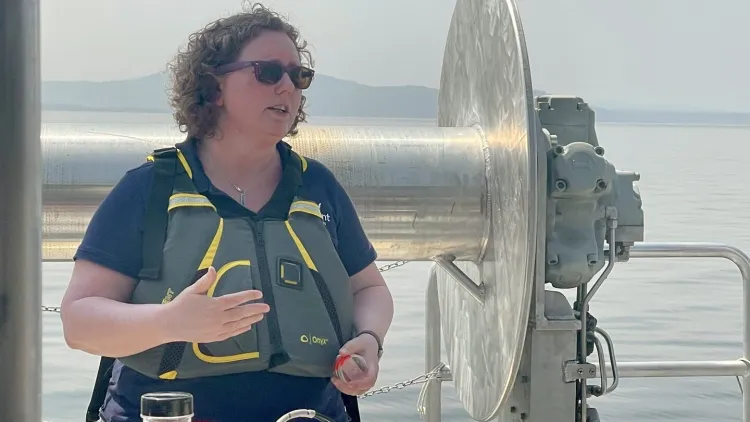
And when it comes to addressing the problem, the influx is the only endpoint that can be tackled right now.
“There is no technology that can remove microplastics at scale from the environment,” says Jefferson, who is also a Gund Affiliate and professor in the Rubenstein School of Environment and Natural Resources. “So once they're in the lake or on shorelines, they stay there,” deteriorating into ever-tinier pieces. But as long as people keep using and discarding plastic products in the Lake Champlain basin, microplastics will just keep accumulating in the lake, washing up on shorelines, and draining to Canada.
Jefferson and her students are tracking answers that will eventually inform actions to keep more microplastics from getting into the Lake Champlain watershed. Cutting off the supply will benefit residents of the many towns that drink the lake’s water, beachgoers, fishers, and the countless organisms that live in, and around, the lake.
“We've had conversations with folks at the state Department of Environmental Conservation who have told us how valuable it is going to be to have this information,” Jefferson says.
In the meantime, Jefferson and her students will continue their work, one beach at a time (they do manage to carve out time for the occasional selfie with the “’daks in the background”, she admits.). They’re spreading the word, too, and sometimes they’re joined by local kids who’ve also taken a strong interest in the microplastics problem, she says.
“In May, Lake Champlain Sea Grant was out with over 200 seventh graders, doing beach microplastics work,” she says. “On the educational side of things, our work is very much ongoing.”
Using microbes to break down dangerous chemicals
Sometimes, the contaminants in water are too small to see even using a microscope. Chemicals found in groundwater can also be dangerous. Gund Fellow Matthew Scarborough is working to improve groundwater quality by using microbes to remove hazardous compounds.
Scarborough, joined by a partner at Arizona State University, is seeking ways to break down halogenated compounds, which have been around for decades.
“Whether most people realize it or not, they’ve heard about halogenated compounds—the ones that take a spotlight right now are PFAS chemicals,” Scarborough says.
Scarborough is looking at a broad range of these types of chemicals, which are very difficult to break down and thus extremely tenacious in the environment. They’re also widespread, due to their use in industrial, agricultural and other applications. Human exposure to these compounds has been linked to multiple health problems, including cancer.
But even though halogenated compounds are hard to break down, there is one big, or rather tiny exception. Microbes, or tiny organisms like bacteria, viruses and fungi, may be effective in prying the compounds apart, leaving less dangerous chemicals in their wake.
Funded by the National Science Foundation, Scarborough and his research partner are exposing contaminated samples of groundwater and soil to different blends of microorganisms, “trying to figure out how we can combine microbial communities that can break these compounds down at a quicker rate than they currently do in the environment,” he says. Ultimately, these microbial communities could be deployed to break down halogenated compounds like trichloroethylene (TCE) and perchloroethylene (PCE). Vermont Public reported in early 2025 that there are over 100 sites contaminated with TCE and PCE across Vermont.
Scarborough is excited about the specific health benefits of this project, which potentially include cleaner drinking water, less environmental exposure to dangerous chemicals for humans and other organisms, and safer soils in which to grow crops. But he also views the research as an opportunity to mentor the next generation of scientists.
“Training students is 50% of the motivation, as far as I'm concerned,” he says, noting that undergraduate and graduate students participate in this work.
“The other 50% just comes from the fact that I really like our planet,” he adds. “I want it to be a hospitable environment for humans as long as we can keep it that way, so I’ve committed my life to trying to make that happen.”
